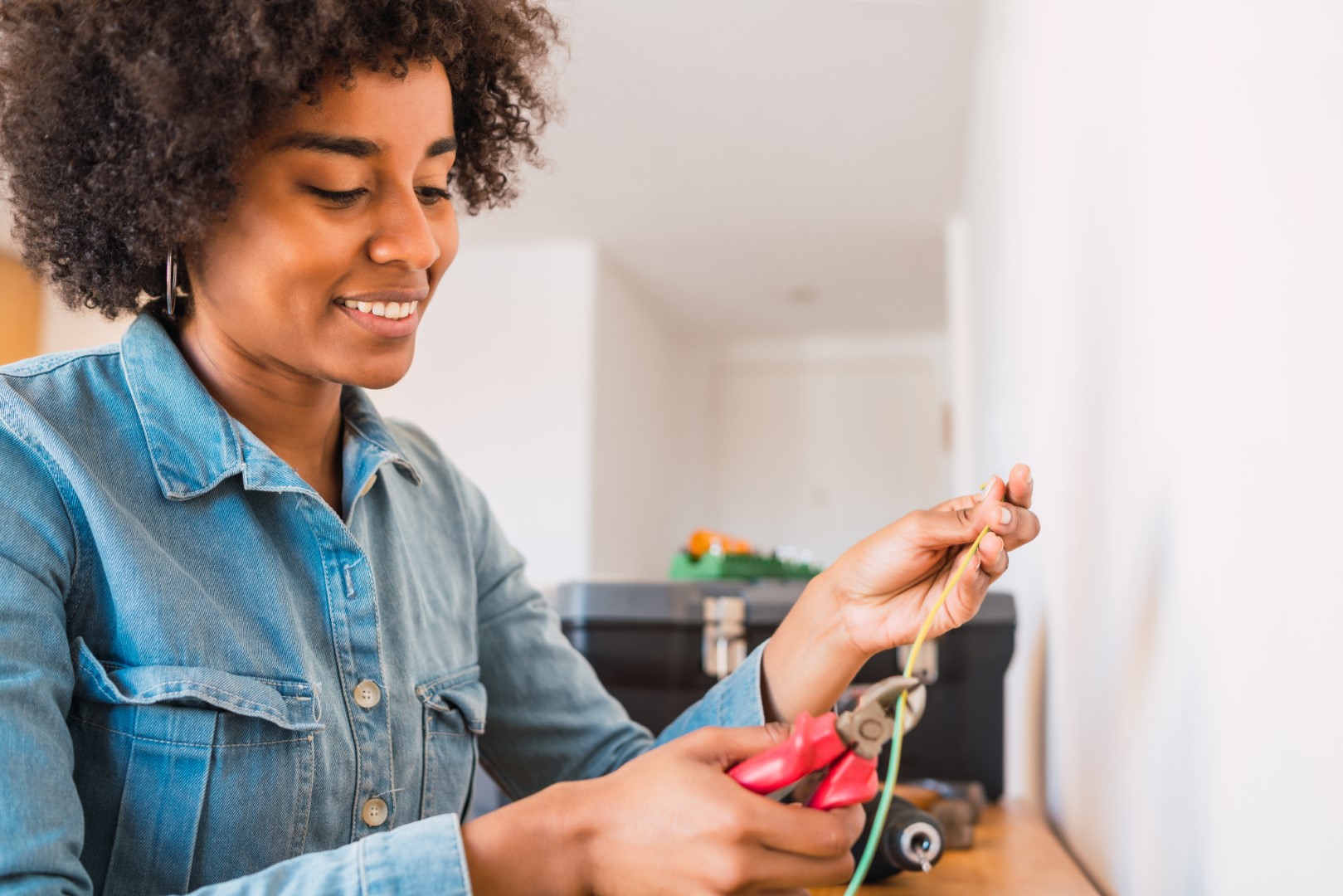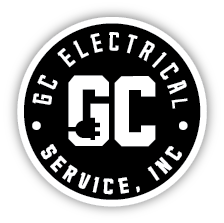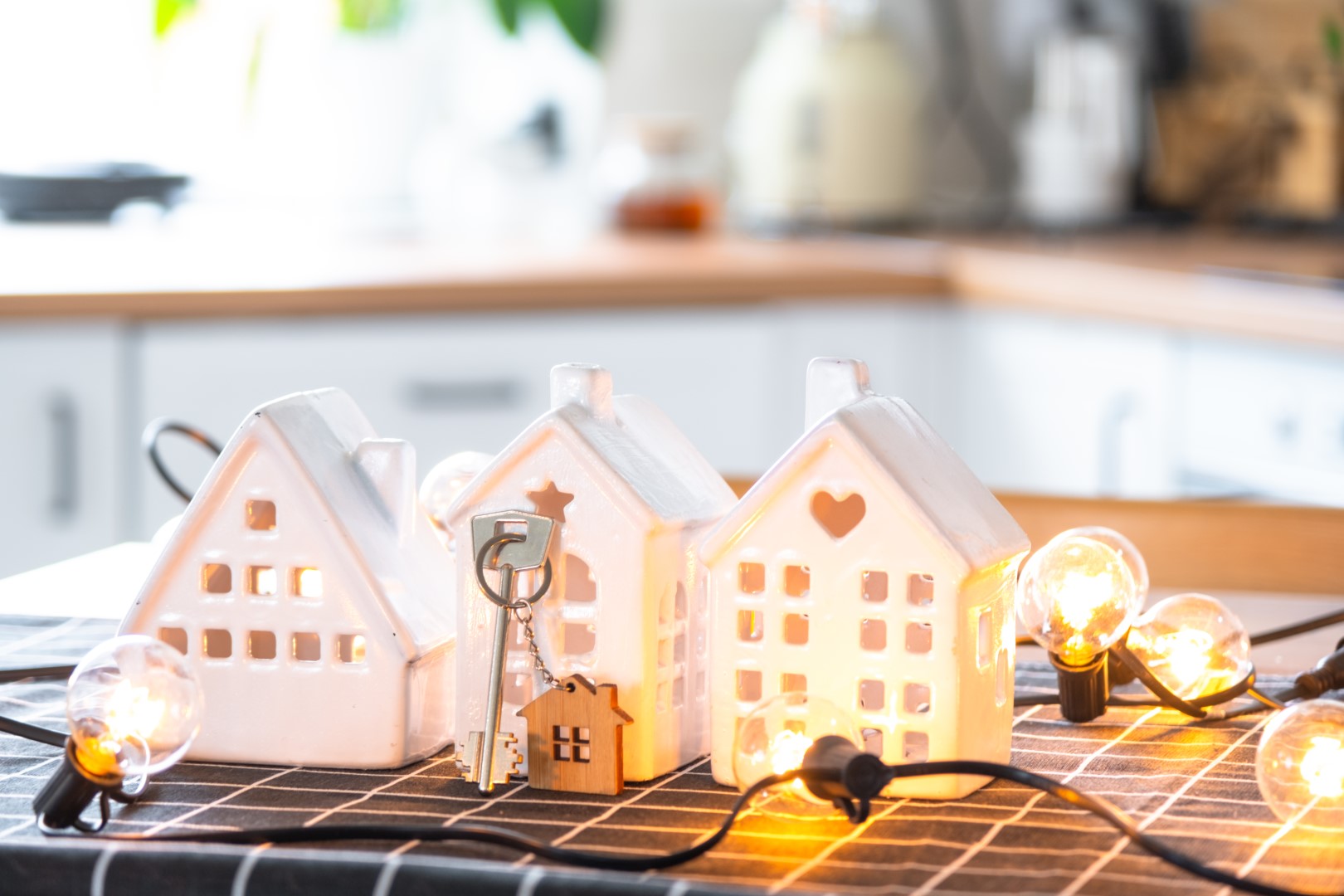Electricity is the lifeblood of modern homes, powering everything from lights and appliances to heating and cooling systems. Understanding how electricity works in your home can help you troubleshoot issues, perform minor repairs safely, and communicate more effectively with electricians. This comprehensive guide will walk you through the fundamental concepts of home electricity, the main components of your electrical system, common issues, and safety tips to ensure a secure and efficient household.
How Electricity Works: Fundamental Concepts
Understanding the fundamental concepts of electricity is essential for managing your home's electrical system. These concepts include the principles that govern the flow of electricity, how it is measured, and the components that ensure its safe distribution throughout your home. With this knowledge, you can better appreciate how electricity powers your everyday life and recognize potential issues before they become serious problems.
Voltage (V)
Voltage is the electrical potential difference between two points measured in volts (V). It is the force that pushes electric charges through a conductor. In most homes, standard outlets provide 120 volts, while larger appliances like dryers and ovens use 240 volts.
Current (I)
Current is the flow of electric charge through a conductor, measured in amperes (A) or amps. It indicates how much electricity flows through a circuit at any given time.
Resistance (R)
Resistance is the opposition to the current flow within a conductor, measured in ohms (Ω). High resistance reduces current flow, while low resistance allows more current to flow.
Power (P)
Power is the rate at which electrical energy is consumed or produced, measured in watts (W). It is calculated using the formula P = V x I, meaning power equals voltage times current.
Circuit
A circuit is a closed loop that allows electricity to flow from a power source through conductors to an electrical device and back to the power source. Depending on how components are connected, circuits can be series or parallel.
Main Components of Your Home's Electrical System
Your home's electrical system is a complex network with several key components working together to deliver electricity safely and efficiently.
Service Entrance
The service entrance is where electricity from your utility company enters your home. It can be an overhead or underground line connected to a meter measuring electricity usage.
Electrical Panel
Also known as the breaker box or fuse box, the electrical panel is the central hub that distributes electricity from the service entrance to various circuits throughout your home. It contains circuit breakers or fuses that protect each circuit from overloading.
Circuit Breakers and Fuses
Circuit breakers and fuses are safety devices that protect your electrical system from damage caused by excessive current. When a circuit is overloaded, the breaker trips, or the fuse blows, interrupting the flow of electricity to prevent overheating and potential fires.
Branch Circuits
Branch circuits carry electricity from the electrical panel to outlets, lights, and appliances throughout your home. A specific breaker protects each circuit or fuse in the panel.
Outlets and Switches
Outlets (receptacles) and switches are your home's access points for electricity. Outlets allow you to plug in electrical devices, while switches control the flow of electricity to lights and other fixtures.
Wiring
Wiring connects all electrical system components, carrying electricity from the panel to outlets, switches, and appliances. Common types of wiring include non-metallic (NM) cable, armored cable, and conduit.
Common Electrical Issues and Troubleshooting
Understanding the basics of electricity can help you identify and troubleshoot common electrical issues in your home. Here are some typical problems and tips for addressing them:
Power Outages
Power outages can result from utility company issues, severe weather, or problems within your home's electrical system. If your home experiences a power outage, check if your neighbors are affected. If the outage is isolated to your home, inspect your electrical panel for tripped breakers or blown fuses.
Frequent Circuit Breaker Trips
Frequent breaker trips can indicate an overloaded circuit, short circuit, or ground fault. Identify the devices on the affected circuit and unplug some to reduce the load. If the breaker continues to trip, consult a licensed electrician.
Flickering Lights
Flickering lights can result from loose bulbs, faulty switches, or issues with your electrical system. Tighten loose bulbs and check switches for proper operation. If the problem persists, it may indicate a wiring issue that requires professional attention.
Dead Outlets
Tripped breakers, blown fuses, or faulty wiring can cause dead outlets. Check your electrical panel for tripped breakers and reset them if necessary. If the outlet remains dead, consult an electrician to inspect the wiring.
Burning Smell or Scorch Marks
A burning smell or scorch marks around outlets or switches indicate serious electrical problems. Turn off power to the affected area immediately and contact a licensed electrician to investigate and repair the issue.
Safety Tips for Handling Electricity
Safety is paramount when dealing with electricity. Follow these tips to ensure a safe electrical environment in your home:

Regular Inspections
Regularly inspect your electrical system for signs of wear and tear, such as frayed wires, scorch marks, or loose connections. Address any issues promptly to prevent potential hazards.
Use the Right Wattage
Always use the correct wattage for light bulbs in your fixtures. Using bulbs with too high a wattage can cause overheating and fire hazards.
Avoid Overloading Circuits
Be mindful of the number of devices plugged into a single outlet or circuit. To avoid overloading, spread out high-wattage appliances across multiple outlets.
Install GFCI Outlets
Ground-fault circuit Interrupter (GFCI) outlets protect against electrical shock in wet kitchens, bathrooms, and outdoor spaces. Ensure that GFCI outlets are installed in all appropriate areas and tested monthly.
Use Surge Protectors
Use surge protectors to protect your electronics from power surges caused by lightning, power outages, or faulty wiring. Ensure they are rated for the devices you're using.
Hire a Licensed Electrician
Always hire a licensed electrician for major electrical work, such as rewiring, installing new circuits, or upgrading your electrical panel. Professionals have the expertise and tools to ensure the job is done safely and up to code.
Educate Your Family
Teach your family about electrical safety, including the dangers of inserting objects into outlets, tugging on cords, and using appliances with wet hands. Encourage everyone to report electrical issues immediately.
Upgrading Your Electrical System
As technology advances and electrical demands increase, upgrading your home's electrical system may become necessary. Here are some common upgrades:
Panel Upgrades
If your home's electrical panel is outdated or unable to handle the electrical load, consider upgrading to a modern panel with higher capacity. Investing in these upgrades can improve safety and reliability.
Adding Circuits
If you frequently experience overloaded circuits, adding new circuits can distribute the load more evenly, which is important when installing new appliances or renovating your home.
Replacing Old Wiring
Homes with outdated wiring, such as knob-and-tube or aluminum, may need rewiring to meet safety standards. Modern wiring materials are safer and more efficient.
Installing Smart Home Devices
Smart home devices, such as programmable thermostats, smart lighting, and home automation systems, can improve energy efficiency and convenience. Ensure that your electrical system can support these devices.
Upgrading Outlets and Switches
Replace old or damaged outlets and switches with modern, safe alternatives. Consider installing USB outlets for charging devices and tamper-resistant outlets for added safety.
Understanding Electrical Codes and Permits
Electrical codes and permits are in place to ensure the safety and reliability of your home's electrical system. Here's what you need to know:
National Electrical Code (NEC)
The NEC sets the standard for safe electrical design, installation, and inspection. It's updated every three years and adopted by local jurisdictions. Familiarize yourself with the NEC requirements for your area.
Building Permits
Many electrical projects require building permits to ensure the work meets safety standards. Permits are typically required for major projects such as panel upgrades, new circuits, and rewiring. Check with your local building department for permit requirements.
Inspections
Local building authorities conduct inspections to verify that electrical work complies with codes and regulations. Inspections are usually required for permitted projects and must be passed before completion.

Energy Efficiency Tips for Your Home's Electrical System
Improving the energy efficiency of your home's electrical system can save you money on utility bills and reduce your environmental footprint. Here are some tips to enhance energy efficiency:
Use Energy-Efficient Appliances
Invest in energy-efficient appliances that use less electricity without sacrificing performance. Look for appliances with the ENERGY STAR label, which signifies they meet strict energy efficiency guidelines.
Install LED Lighting
LED bulbs use significantly less energy than traditional incandescent bulbs and last much longer. Replace your home's lighting with LED bulbs to save on energy costs and reduce the frequency of bulb replacements.
Implement Smart Home Technology
Smart home devices, such as programmable thermostats, smart plugs, and energy monitors, can help you manage and reduce your home's energy consumption. These devices allow you to control energy usage remotely and set schedules to optimize efficiency.
Seal and Insulate Your Home
Proper home insulation and sealing can prevent energy loss and reduce the load on your heating and cooling systems. To maintain energy efficiency, ensure that doors, windows, and ductwork are sealed and insulated.
Conduct an Energy Audit
An energy audit can identify areas where your home is losing energy and recommend improvements. Many utility companies offer free or low-cost energy audits to help homeowners increase energy efficiency.
Renewable Energy Options for Homes
Incorporating renewable energy sources into your home's electrical system can enhance energy efficiency and sustainability. Here are some popular renewable energy options:
Solar Power
Solar panels convert sunlight into electricity and can significantly reduce your reliance on the grid. Many homeowners install solar panels on their roofs to generate clean, renewable energy. Solar power systems can be grid-tied, allowing you to sell excess energy back to the utility company or off-grid, providing complete energy independence.
Wind Power
Small wind turbines can be installed on your property to generate electricity from wind energy. While less common than solar panels, wind turbines are an effective renewable energy solution in areas with consistent wind patterns.
Geothermal Energy
Geothermal systems use the earth's natural heat to provide heating, cooling, and hot water for your home. These highly efficient systems can significantly reduce your energy consumption and utility bills.
Hydropower
For homes located near flowing water, small hydropower systems can generate electricity from the movement of water. While unsuitable for all locations, hydropower is a reliable and continuous renewable energy source.
Empowering Your Home with Electrical Knowledge
Understanding the basics of electricity in your home is essential for ensuring a safe, efficient, and comfortable living environment. By familiarizing yourself with fundamental electrical concepts, the components of your electrical system, and common issues, you can troubleshoot problems more effectively and make informed decisions about maintenance and upgrades. As technology advances and energy demands grow, staying informed about the latest developments in home electrical systems is important. When dealing with significant electrical projects or issues, consult a licensed electrician to ensure the work is performed safely and up to code.
For more tips and expert advice on maintaining electrical safety in your home, visit our GC Electrical Service Inc. blog.


